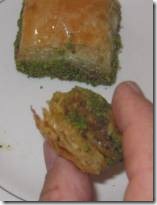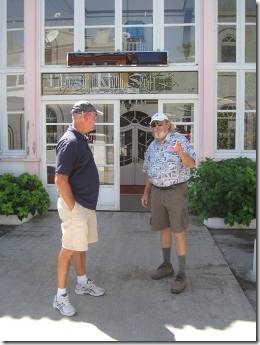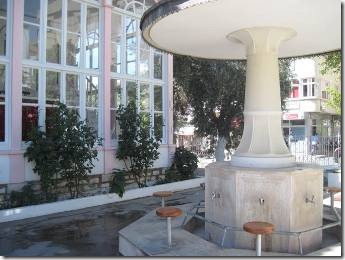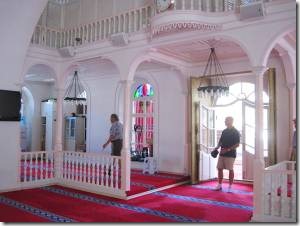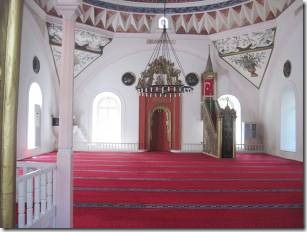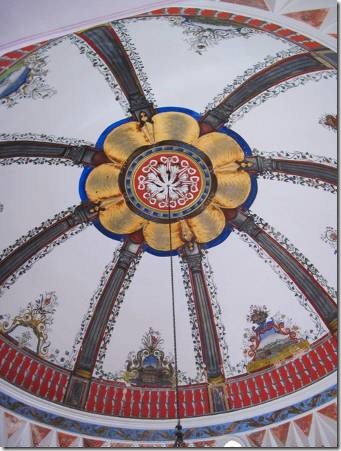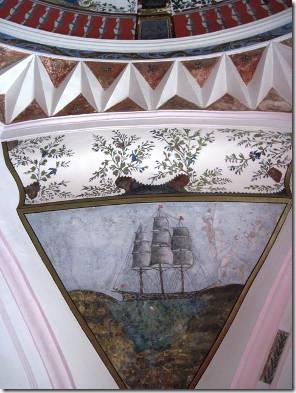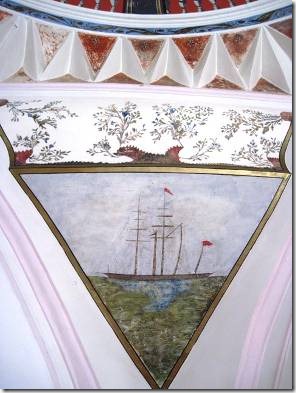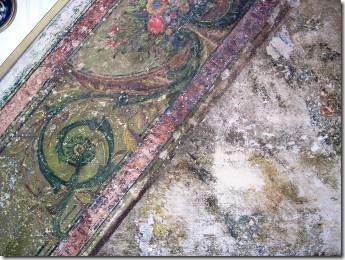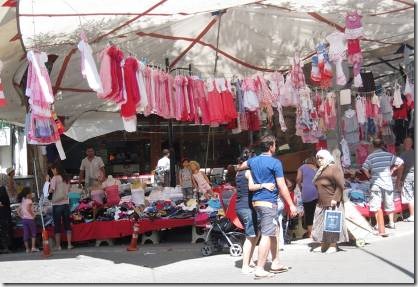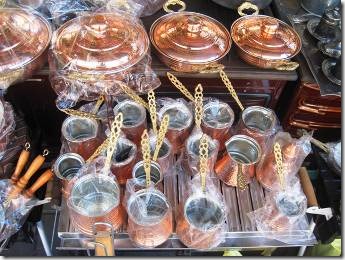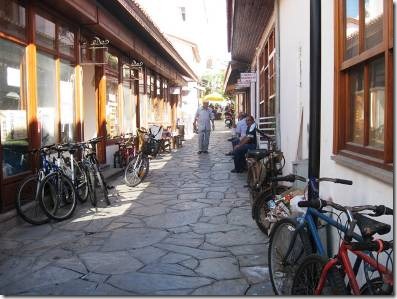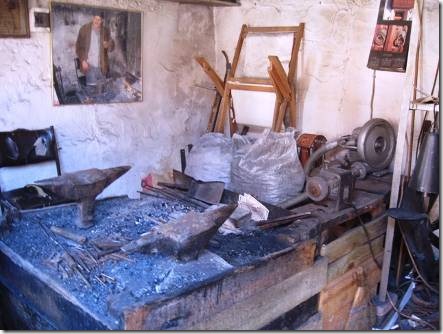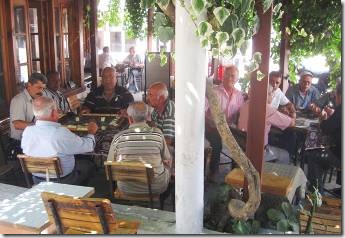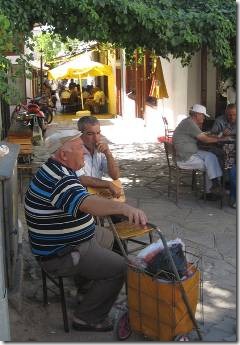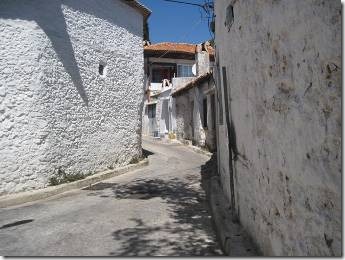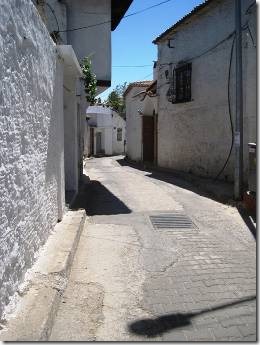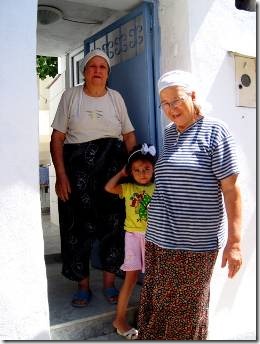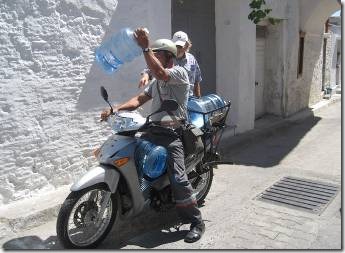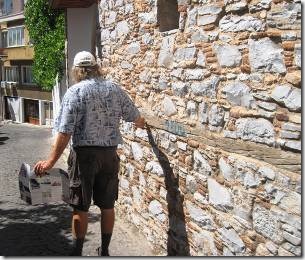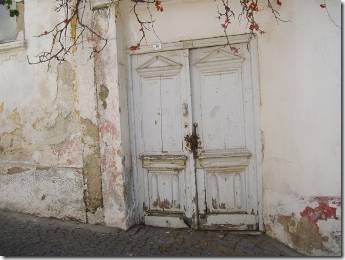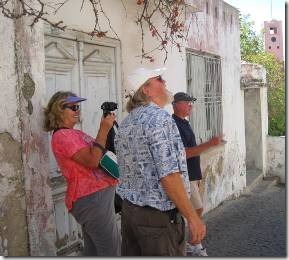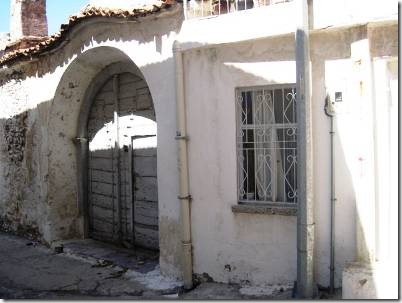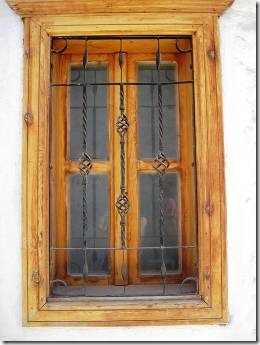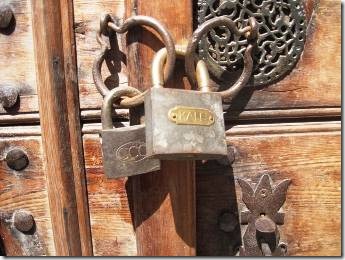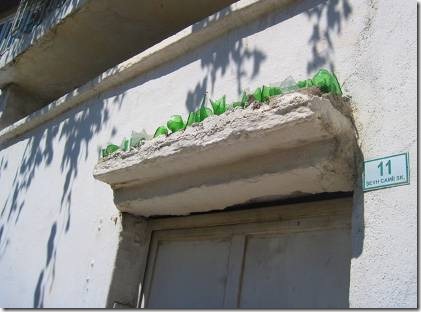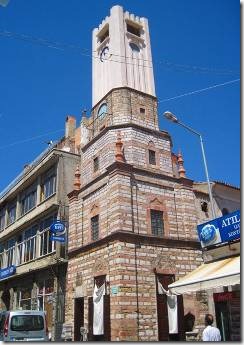Merhaba,
Thursday, went off for a day trip to Muğla with friends Bill and Judy from BeBe. I’m ready to go back!! Here’s part 1.
Ru
DoraMac
“Not many tourists come to Muğla, (MOO-lah, alt. 655 meters/2149 feet, pop. 70,000) but they throng the neighboring tourist meccas of Bodrum and Marmaris, and a tidy portion of the money flows to government coffers in Muğla, (the provincial capital of Muğla region.) If you have an hour or two between buses you can spend it pleasantly enough wandering Muğla’s shady streets, exploring its Ottoman-era bazaar, or sipping a hot glass of tea in one of its tea gardens. http://www.turkeytravelplanner.com/go/med/Mugla/
We went to Muğla on a whim; a whim that took some planning. Randal and I had passed by Muğla several times last year on our way to Bodrum or Milas. We’d just never stopped. But I’d read that there was a section with lovely Ottoman homes and that the Thursday market was quite good. We mentioned it to friends Bill and Judy (BeBe) and they said they’d join us. Originally we planned to take the bus; but by the time you added the costs of getting to the Marmaris bus terminal and taking the bus to Muğla for 4 people, renting a car was cheaper and would get us there earlier in the day.
So this past Thursday morning Randal and I motorbiked to the rental car office, picked up the car and then drove directly to Yacht Marine to collect Bill and Judy. Imagine a sort of straight road with the petrol station at one end, Yacht Marine Marina at the other and the car rental office in the middle. The car’s fuel gage light was on, so getting Bill and Judy before getting gasoline was a bit of a gamble. But the petrol station was on the way out of town towards Muğla and Bill and Judy at Yacht Marine Marina were the opposite way towards where the land ends. Randal, the eternal fuel tank optimist opted to drive the 12 miles round trip hoping the 4 or 5 litres the rental car lady assured us we had would be enough. It was with fuel to spare so we didn’t start the day walking to the petrol station. Gasoline here is about $9 per gallon so rental cars don’t come with much and you only want to put as much gas into a rental car as you will use.
The drive to Muğla is lovely and there’s not much traffic. That is until you actually get into the central area of Muğla and then things get a bit confusing and crowded. But we only had to go around Ataturk Circle one extra time trying to find the Oto Park. We parked the car and then I used my very minimal Turkish to find the tourist information office which the guide book said was across from the Petek Hotel. It is; I asked directions along the way; and we found it as I do know right, left and straight in Turkish though with folks pointing the way….words aren’t so necessary. What happened when we got there was actually pretty funny. In Judy’s words: “Then we set off trekking in search of the tourist office. That turned out to be a much farther walk than indicated in the Lonely Planet guide. When we got there, this office appeared to be a tourism office to arrange conventions or business venues or something. We abandoned Ruth to attempt to talk to the man in charge in the far rear office. Ruth knows some Turkish and we figured the fewer people in the room, the better.” http://svbebe.blogspot.com/2012/08/day-trip-to-mugla.html I did wonder where everyone else had got to, but the kind man was very helpful and it was worth the trip there as I was given 2 Mugla maps, 2 Turkey maps and 2 booklets on the ancient historic city of Stratonikeia not far from Muğla which we decided to visit making for both a fun and interesting full day. Having 2 of everything was important as Judy writes a blog also and the info really comes in handy for that too.
Then, not surprisingly we were all ready for something to drink. At least that’s what Judy and I thought. Bill and Randal thought some kind of sweet snack was necessary too.
Pistachio Baklava for Randal
Judy had iced tea, I had cappuccino, Bill had juice and a chocolate muffin and Randal had baklava, 2 pieces about the size of the photo. One of the fun things about new places is getting to try the food! As I was playing tour leader, and by then it was almost 11 am and Judy and I were ready to move along, I said, "Let’s go! So we did.
One of the places both Judy and I had on our list of places to see was the KURŞUNLU CAMİİ. On the Internet we’d both found pictures of its lovely painted interior. We stopped to see if we could find it on our map and Judy noticed that we were actually standing in the small park where it was located. From the side it doesn’t look like so much. A very thin, small older man carrying a plastic bag in each hand was also walking towards the mosque saying something very loudly to a man working off in the corner. We pretended not to notice what seemed like a one-sided heated discussion. The mosques door was locked so we just peaked into the windows. Next thing we knew the “thin man” was unlocking the door and motioning us to come in. We did taking off our shoes before into the main room of the small painted mosque. I’d brought a shawl with me to cover my head and shoulders but didn’t even think about it. Too busy ogling the lovely painted walls with some really interesting images of old sailing ships, one in full sail and one with the sails rolled up.
“KURŞUNLU Mosque: It was built in 1493 by Esseyit Sucaattin. There is a main leaded dome on top of the mosque which makes it different from the other mosques of the city. ….It is known that there used to be a 30 roomed Muslim Theological School inside the mosque.” (Mugla Tourist Map)
Entrance to the mosque and pre-prayer washing up fountain.
First comes an enclosed porch and a red curtained woman’s prayer area; then you enter the mosque. Like stepping into a fairy tale.
The domed ceiling with scenes painted in the sections.
You can’t really see it here but the middle panel is a painting of a domed building and the right panel is one of mountains…very unusual in mosques which usually don’t allow images. I knocked myself out looking for information on the web, but found only mangled translations of Turkish sites with very little information to boot. And nothing about the paintings.
Ship under sail and ship maybe at anchor? This is even more interesting imagery as Mugla is in the mountains and not on the coast.
A lovely faded panel along the wall.
We felt our time in the mosque was limited so didn’t take the time to really look at all of the panels and artwork. It didn’t take long for us to feel as if we’d imposed on the “thin man” long enough. He re-locked the mosque after we left. I think we were quite lucky to have seen it at all. Randal gave me a 10 TL note for the man as a donation to the mosque. Not sure if he took it that way, but it didn’t matter. He smiled at me and put his closed hand over his heart which is lovely to receive from someone. We just appreciated getting to see “the painted mosque.”
This is the info I found on the web….nothing mentions the paintings.
Leaded Mosque in Mugla , Mugla on Balibey neighborhood in the in the Ottoman era mosque.
Construction of the 1493 in the hinge Begs Şucaeddin Bey started and completed in two years. Architecture classical Ottoman architecture has some characteristics. Dome of the lead plates was given this name because it is coated. Has two pieces of garden fountain.
The garden of the mosque was first built 30 classrooms, a theological school there. However, the modifications in later years removed from these madrasas. The mosque is located in the Kaaba and the sailing ship pictures are worth seeing. Evliya Çelebi ‘s central mosque in Mugla, Mugla travelers today is in the works mentioned. http://tr.wikipedia.org/wiki/Mu%C4%9Fla_Kur%C5%9Funlu_Camii
Şucaaddin Esseyyit 1494’ye built this mosque in the center of the province of Mugla. Window in front of the pulpit, dated 1853 and inscribed Muderris repaired by Mehmet Efendi Rahmi yazılıymış dome covered with lead. Therefore, the name given to the mosque Leaded Mosque. Serif Efendi mosque once more in 1900, had it repaired and added a portico in front. In addition, repair the mosque inscriptions dated 1853 and 1900 bulunmaktaymış. mosque patron of the mosque is the tomb of Dr. Esseyyid Şucaeddin’in window in front of the pulpit, and on the tomb of "Ban-i-Sharif Mosque Hazel Dr. Esseyyid Şucaeddin 899 (1494)." Yazılıymış. At different times in the mosque feature a large extent lost due to repairs. Only on stone plinth with a round body, protecting the authenticity of a single balcony minaret. Sources in front of the mosque, madrasa and a three-cell is written in the present gelememiş any trace of this theology school. http://gittiklerimden.blogspot.com/2009/11/mugla-kursunlu-camii-serifi.html
“Continue walking north into the bazaar, its narrow lanes jammed with artisans’ shops and small local restaurants. Giant plane trees add shade. Proceed up the hill to see Mugla’s Ottoman houses, many of them in good condition. The winding alleys between whitewashed walls give it a classic Mediterranean ambiance.” Turkey Guide Book
Arasta Ottoman Bazaar
“The Arasta which was known as the old bazaar of Mugla is still in function with its several little shops. It is a place where the tourists who like to experience a bit of history would never pass through. There are tinsmiths and ironsmiths and shops built in guild system in this area. One can find souvenirs before going back home.” (Mugla City Map…Not sure what they meant about tourists would never pass through. I think they meant tourists should not miss. Think that got lost in translation.)
I bought some light-weight, loose, elastic waist shorts and Randal and I bought elastic waist pants for very little money. Light-weight, loose and elastic are essentials for roastingly hot weather. Cheap is good too. Judy bought some shorts too.
Long handled small pots for making Turkish coffee which is also an art.
All roads were interesting…..
Everyone sort of followed me, a winner of the Blue Ridge Bicycle Club’s Wrong Way Donnie Award. But we also had some maps so had a vague idea where we were heading….to see the Ottoman Houses. I don’t know if tourists “never pass through” or just don’t really come to Mugla, but we seemed to be the only ones around. Which, after Marmaris and Bodrum, it was a real treat to be in a real place.
This was the shop of either a blacksmith or cooper…now an artisan. But no one was there to ask.
Maybe he was here with the guys playing tiles or cards… or waiting for?
Winding white-washed homes along the narrow town roads that climbed up from the city center.
Judy asked if we could take their photo….Randal retrieving an empty water bottle that had fallen from the motorbike.
Randal is fascinated by these stone with rows of timbers which we’d first seen up in Lake Ergidir last year.
I was fascinated by walls and doors just begging to be painted in watercolors…
Judy, Randal and Bill fascinated by something….
I read something about single doors and double doors, one being Turkish and one Greek. Don’t know what this is. We saw lots but missed lots so have a great excuse to return to Mugla when the weather is cooler. Actually because we were up at a higher altitude and away from the coast, it was already cooler.
Artistic security and some locks CCC and Kale for friends Peter and Jane….who I promised way more lock photos as Peter is a lock inventor/expert and Jane knows lots too.
Glass for security or art?
In China glass was put on the tops of walls in neighborhoods. We guessed this was to prevent someone from getting up to the balcony above the door. But maybe it’s art.
Clock tower built in 1895 by Master Elvari (map info)
It was noon and time to find some lunch which will be in part 2.
http://svbebe.blogspot.com/2012/08/day-trip-to-mugla.html Judy’s full write up about our day in Mugla.
This info is from Mugla University website for the history of Mugla.
The province of Mugla, located in the southwest corner of Turkey where the Aegean Sea meets the Mediterranean, includes popular holiday destinations, such as Gökova, Bodrum, Marmaris, Datça, Milas, Dalyan and Fethiye. With its beautiful resorts, impressive ruins of past civilizations, magnificent landscapes and vast beaches, thermal waters, rich flora and fauna, as well as accommodations, restaurants and entertainment choices to suit every taste, this region has something to offer to everyone.
The Mugla region, called ‘Caria’ in ancient times, has for centuries been a leading social, cultural, and historical centre. The first known inhabitants of the region between the Dalaman and Meander rivers were ‘Carians’ , going back to 2000 BC. Sice then, numerous ancient societies and Anatol ian civilizations including Greek, Roman, Byzantine, Seljuk, and Ottoman have existed here .The region came under the rule of the Ottomans in 1390, starting the era of Turkish sovereignty in Mu gla. Mu gla, the province’s capital, is a charming city that stretches from the foothills of Asar Mounta in onto the plain bearing its name. This modern and peaceful city with low population growth rate is famous for its unique architecture. The picturesque homes with whitewashed walls, red tiled roofs, and distinctive chimneys have gained such fame and been placed on the protected buildings list.
Since the economic development of the city mostly relies on tourism; the natural, cultural, and historical beauties of Mu gla have always been protected. It is indeed a city keeping past for the future. Among the places well worth a visit are: the Mugla Museum with fossils of extinct animal species excavated in the village of Özlüce; the historic trade guild’s markets; Saburhane, where historical houses, shops, and cafes offer a breath from the past; Kurþunlu and Ulu Mosques built some 600 years ago; the Olive Merchants’ Building; and the Konakaltý Cultural Centre. Also located 3 kilometres from Mugla city centre is the region’s renowned highland summer retreat known as ‘Mugla Yaylasý’ with its tall plane trees, fruit orchards, vineyards and vegetable gardens.
Mugla city is a hub for transportation, and coaches run directly from the otogar to all neighbouring towns and major cities of the country. The highways in Mugla are connected with the highways of Aydın, Denizli, Bodrum and Fethiye, linking Mugla with the rest of the country. There are two international airports in the province; Dalaman and Bodrum-Milas. Mugla province, which accomodates 19 marinas and slips, has the longest coast in Turkey, 1124 kilometres. Regular boat trips are available between the coastal resorts as well as to neighbouring Greek Islands. Mugla has a Mediterranean climate, hot and dry in summer and warm and rainy in winter.
Living in Mugla means being only an hour away from the most talked about tourist destinations. Famous antique cities such as Halicarnassos, Knidos, Mylasa, and Kaunos, hundreds of magnificent bays with unmatchable beauty, places like the Blue Lagoon, the Caretta Caretta Beach, the Patara Beach, the Butterfly Valley are only a few to mention, which make the city as attractive as it can be for the 3 million tourists hosted annualy.
Mugla is very rich in respect to endemic types of vegetation. On the agricultural front, the region is famous for the production of honey, olives, olive oil, citrus fruit, almonds, various herbs, and greenhouse vegetables. Mugla is a heaven of monumental trees and more than two thirds of the Mugla province is covered with forests. The wildest natural beauties are within only a short distance from the city centre, giving endless possibilities for escapes to spectacular countryside. You can also engage in countless outdoor sports, some of which are trekking, mountain climbing, hang-gliding, cycling, riding, fishing, sailing, diving, and other water-sports. However, if you are in a mood for having a great night out, the lively towns of Bodrum or Marmaris are waiting, where you can’t close your ears to the call of the night. Once the summer begins, the world of entertainment virtually moves from Istanbul to the south of the country where spectacular festivals, performances, and concerts take place. Mugla University has been, in every sense, a leading stimulus for the development of Mugla. Thousands of university students coming from the other cities of Turkey with different ethnical and cultural backgrounds, enhance the social structure of the city. They give the city a new identity as multicultural, free, peaceful, and western.
The richness of the natural beauties, the pristine waters, and the magnificent historical and cultural heritage are all represented in the emblem of the University. When the academic year starts, the city welcomes students who dramatically change the population and appearance of the city. The blend of natural and historical resources with the vitality of students is rapidly moving the city in the direction of becoming a centre for educational and cultural affairs. http://www.mu.edu.tr/EN/sayfa.aspx?skod=2155&bkod=77777777&mkod=3427

